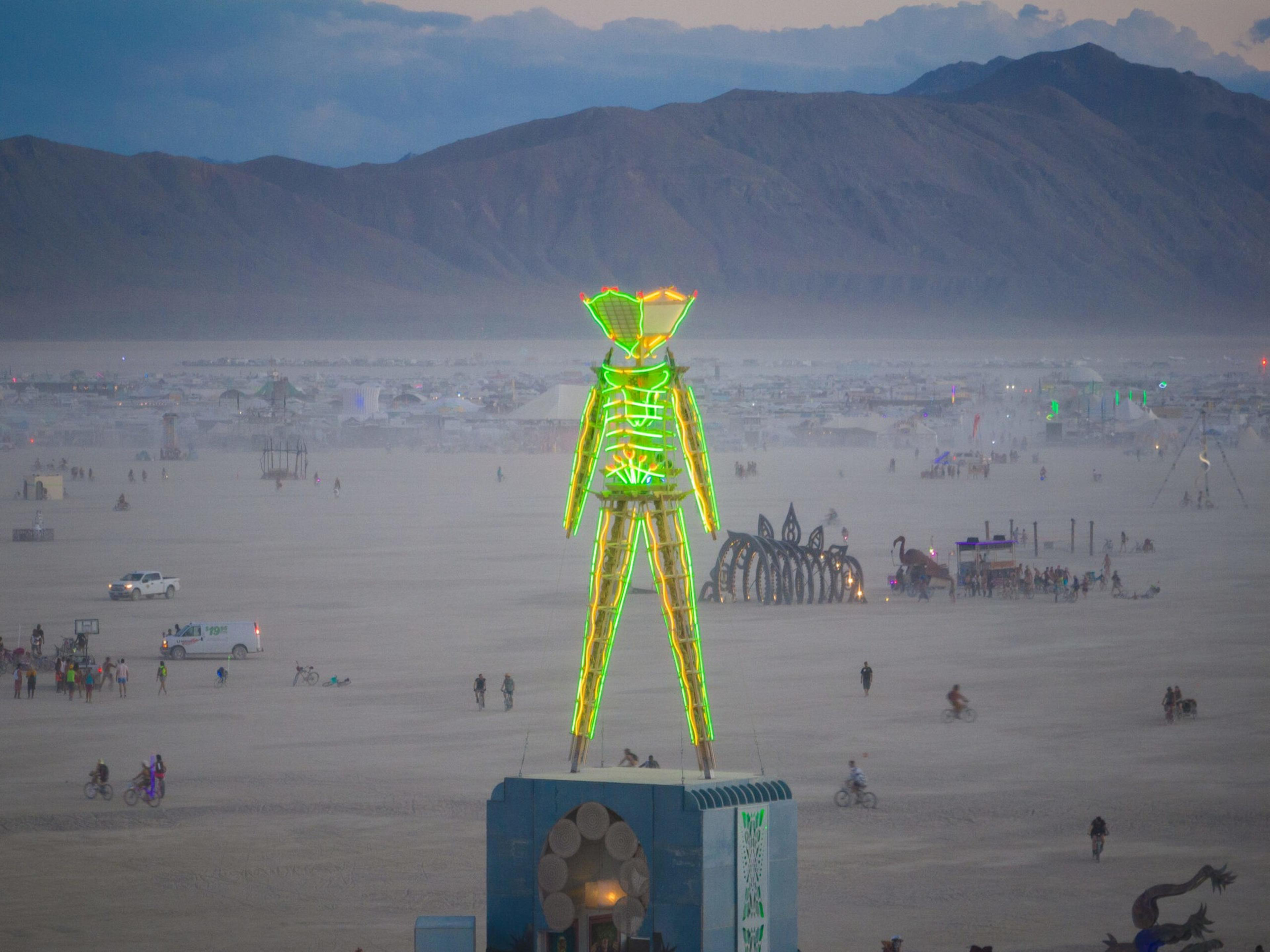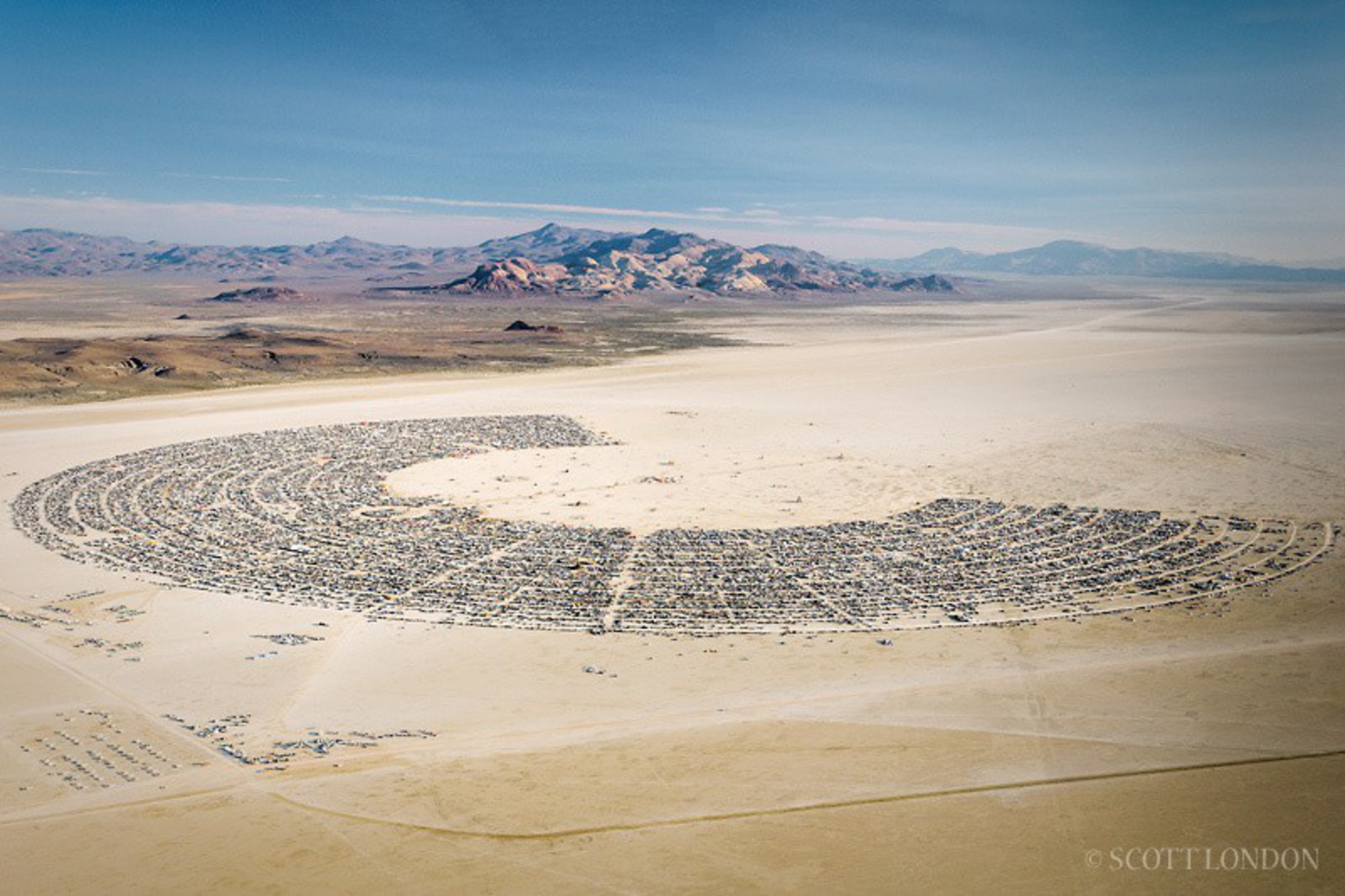If you’ve always wanted to go to Burning Man, this may just be the year.
Tickets to the late-summer weeklong party in the Nevada desert have long been a hot commodity. Known for its fantastical towering sculptures and hedonistic activities, Burning Man is typically a sold-out event attracting some 80,000 people to its temporary city.
But less than two weeks before the nine-day gathering starts on Aug. 27 in Nevada’s Black Rock Desert, tickets are for sale online in Facebook groups like Burning Man Tickets and Vehicle Pass Exchange (opens in new tab) and Burning Man 2023 Tickets (opens in new tab). Some are going for as low as $250—more than $400 below face value.
Burning Man is not a traditional festival. Rather, it’s a large-scale celebration of artistic expression that involves creating a massive-yet-makeshift encampment dubbed Black Rock City. The festival involves structures like villages, performance stages and even a small hospital popping up virtually overnight.

“This hasn’t been happening since the early 2000s, maybe the late ’90s,” said Scottie Oceano Ingallinella, a Burner who has been in the community for several decades and is attending his ninth burn this year. “In about February or March, I began seeing whole theme camps selling their entire setup, shipping container and all.”
Burning Man capped (opens in new tab) the festival population at 80,000 in 2019, citing participant safety and environmental concerns.
Last year, the playa was at full capacity, but given the hordes of people currently selling their tickets, Burning Man veterans like Ingallinella anticipate that there may only be around 60,000 attendees this year.
Tough weather conditions last year may have prompted some attendees to opt out this year. Temperatures hit 103 degrees on the hottest day last year, and strong winds made for extreme, abrasive dust storms, although this year’s weather forecast looks ideal.

The Burning Man Project, the nonprofit organization in charge of planning and executing the event since 2013, did not respond to requests for comment.
On its website, the project recommends that people interested in making last-minute purchases buy tickets from its official resale system, STEP, which stands for Secure Ticket and Exchange Program.
Burners say there are reasons beyond weather for this year’s slack demand. Longtime Burner Joel Briggs conducted an informal study, asking 50 people why they were selling their tickets. Twenty-eight people responded, and 11 said that they were selling them for financial reasons. Others said they felt dissatisfied with Burning Man rules and that was the primary reason for wanting to sell their tickets.
The ticket overflow may also be due to the fact that the Burning Man Project sold more tickets to camps this year, expecting high demand, and camps now have a huge surplus of tickets as members opt out of going, said Lofax Elifas, who runs the Burning Man 2023 Tickets Facebook group, which has over 36,000 members.

“Last year, people were so desperate for tickets that they were offering experiences—like you can come stay in my Airbnb in Hawaii for two weeks free—to be able to buy tickets,” Elifas said. “That’s how hard the secondhand market for the tickets was.”
Elifas predicts Burning Man may have a hard time selling FOMO tickets—which go on sale two months before the main sale, are priced at $1,500 or $2,750 apiece and normally don’t sell out as quickly—going forward, meaning that the organization wouldn’t be able to subsidize as many low-cost tickets for people with limited incomes.
Burning Man has always been an expensive and elaborate affair, this year involving a $575 ticket and $150 vehicle pass. After taxes and fees, the ticket alone comes out to around $667, a steep incline from pre-pandemic, when tickets were under (opens in new tab) $500.
But tickets are just the start of the cost; building a camp that contributes to an experience like an art installation or a rave takes months of labor and often thousands more dollars.
Burning Man has long had close ties to the tech industry, and the economic stress in the sector this year may be contributing to people choosing to opt out. More than 227,000 technology sector workers globally have been laid off since the start of 2023, according (opens in new tab) to Layoffs.fyi.

Ingallinella said the increasing number of “plug-and-play” camps—and the blowback to them—may be putting Burning Man out of reach for many.
“Plug-and-play” refers to a camp that provides amenities like water, food and luxe accommodations such as mobile homes and RVs, usually set up and taken down by a staff. Such setups come with a hefty price tag, sometimes upward (opens in new tab) of $16,000 a person, for those who want to fly into the playa without the intensive work of building a camp themselves from scratch.
This type of ready-made camp goes against the original ethos of Burning Man, which is outlined in its 10 principles (opens in new tab) and includes goals such as “radical self-reliance” and “decommodification.”
“Burning Man decided to start kind of putting the hammer down and trying to get rid of the plug-and-play camps,” Ingallinella said. “And they did that starting last year. So I think getting rid of the plug-and-play camps had a lot to do with people not showing up.”
Some Burners may also be taking a break now as part of a cycle. Last year was the first official in-person event after a two-year pandemic hiatus, and many Burners were excited to gather together again.
However, the hiatus also gave people the chance to readjust their habits and discover different ways of spending their summer, with many realizing the money and time they spent on Burning Man could be used for a Europe vacation or cruise, Elifas said.
Burning Man has morphed into a strange and cerebral amalgamation of hippie, venture capitalist and tech culture since its inception in 1986.
But some longtime attendees say Burning Man has increasingly faced an identity crisis, with the cost of arranging accommodations, food and activities at odds with its mission of “radical inclusion.”
“Many of us have been deeply inspired and supported by the Burning Man ecosystem over the past decade—I wouldn’t have become a musician without it,” Ashutosh Desai said. While he is still planning to go this year, he has been thinking seriously about the values that the organization espouses; particularly, how to reconcile the growing number of projects funded by VCs and Burning Man’s majority white demographic (opens in new tab), which has historically hovered around 80%.
During the Covid-19 pandemic, when Burning Man went on hiatus, Desai said he began thinking about how he could live the gathering’s principles closer to home.
“During the pandemic, my community started investing the time and energy they would have put towards Burning Man into building and fostering the local music and arts scene. More live music on Valencia Street—often raw and independent. New events, venues and festivals popping up across all genres,” he said. “The social movements through the last few years—particularly Black Lives Matter and climate awareness—helped my community realize that artists and culture builders have far more work to do at home than at Burning Man.”
